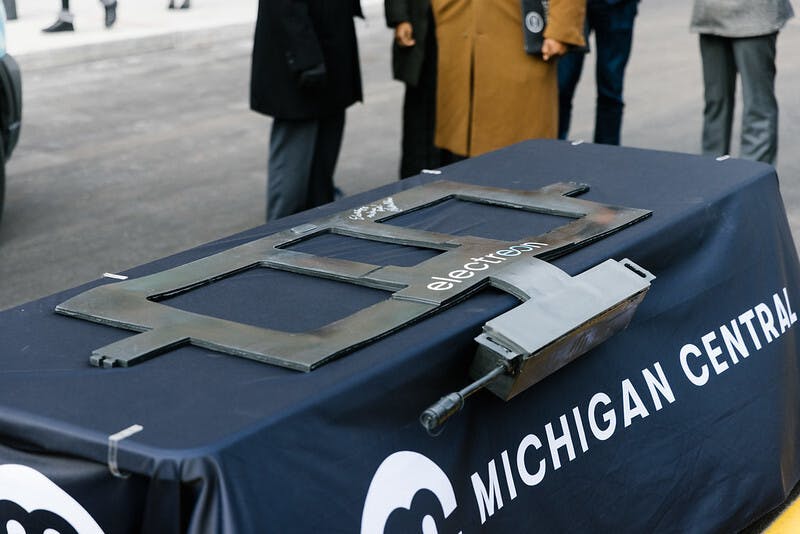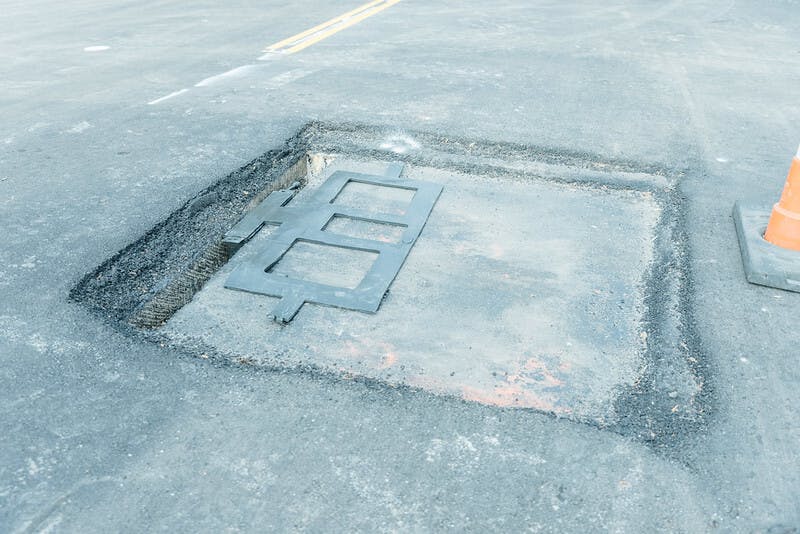Detroit has a wireless charging road for EVs—if your car has the right equipment (it doesn’t)
You know how many newer cars have a little cradle in the center console to hold your cell phone, which charges it as you drive?
Imagine a stretch of road that charges your electric car as you drive over it.
This actually exists: A quarter-mile of road in Detroit has just opened, constructed with copper coils beneath the pavement to charge your car as you pass over it. Well, maybe not your car, but those fitted with a receptor system manufactured by the technology’s owner, Electreon, described as the “leading developer and provider of wireless charging solutions for electric vehicles.”
At present it would appear that just one Ford research van is equipped with the technology, but it’s a start. Here’s how the Detroit Department of Transportation (DDOT) describes it: “14th Street between Marantette and Dalzelle streets is now equipped with inductive-charging coils that will charge electric vehicles equipped with Electreon receivers as they drive on the road. The road will be used to test and perfect this wireless-charging technology in a real-world environment and perfect it ahead of making it available to the public in the next few years, helping to further establish Michigan and Detroit as leaders in innovation and technology.”
Given the amount of salt Detroit uses on its roads in the winter, if the coils can survive there, they can survive anywhere.
“We’re excited to spearhead the development and deployment of America’s first wireless charging road,” said Dr. Stefan Tongur, Electreon’s vice president of business development. “Alongside Michigan’s automotive expertise, we’ll demonstrate how wireless charging unlocks widespread EV adoption, addressing limited range, grid limitations, and battery size and costs. This project paves the way for a zero-emission mobility future, where EVs are the norm, not the exception.”
When a car with a receiver nears the charging segments of the road it transfers electricity wirelessly through a magnetic field. This electricity is then transferred as energy to the vehicle’s battery, charging it. These charging segments can transfer electricity to the receiver either when the vehicle is parked or when it is driving. “The electric road is claimed to be safe for drivers, pedestrians, and wildlife,” says DDOT.

“Each coil in the road is activated only when a vehicle with an approved receiver passes over the coil. This ensures that energy transfer is controlled and provided only to vehicles that require it.” It’s unclear how long a car would have to pass over the electrified road to gain any meaningful amount of charging.
The charging road runs alongside the Newlab at Michigan Central Building, home to more than 60 tech and mobility startups. In 2024, the Michigan Department of Transportation will begin seeking bids to rebuild part of Michigan Avenue, which will see additional inductive charging installed. Electreon has also installed two static inductive charging stations in front of Michigan Central Station, which will be able to charge Electreon-equipped vehicles while they are parked. The company has 18 similar projects around the world, most in Europe and Israel.
Here’s how Electreon plans to make money: “Electreon provides accessible financing options including Charging as a Service, customized to meet the needs of fleet vehicle operations. We cover upfront costs, including the infrastructure, implementation, and operations.
“Our customers can choose to pay a monthly subscription, or pay for wireless EV charging as they use it… We place our unique copper coils just below the surface of the road—along highways, at bus stations, in parking lots, and at logistics centers. Deployment takes place at night to minimize disruption. The coils are then covered with asphalt and the Electric Road is ready to begin charging EVs.”
***
Check out the Hagerty Media homepage so you don’t miss a single story, or better yet, bookmark it. To get our best stories delivered right to your inbox, subscribe to our newsletters.





Money would be better spent bringing the costs of things like carbon fiber down.
EV’s need a weight reduction = longer range, less charging.
Copper is pricey, barring massive and foolish government subsidy this in-the-road idea seems like a fool’s dream. Long whip antennae that snag an overhead gridline (like streetcars in some cities are fixed to) seems far more practical if charging-while-driving should even be pursued.
Legalize and subsidize KEI class cars (looking at you California) instead of massive EV SUV makes more sense. Get a EV KEI car down to cheaper than Hyundai Accent pricing that would make a difference.
Granted Toyota’s hybrid argument still wins (most pollution reduction for least resources inputted, most convenient to consumer).
Oh lovely. Induction charging. Hows that going to impact electronics of conventional cars and electronic devices on the passengers in those cars? Is there some magic resonant frequency that only creates a charge field on the experimental cars? Inquiring minds want to know.
In the meantime, word to the wise. Don’t drive those test roads. If something happens and you suffer electronics damage, the legal burden is on you to prove that their technology caused that damage.